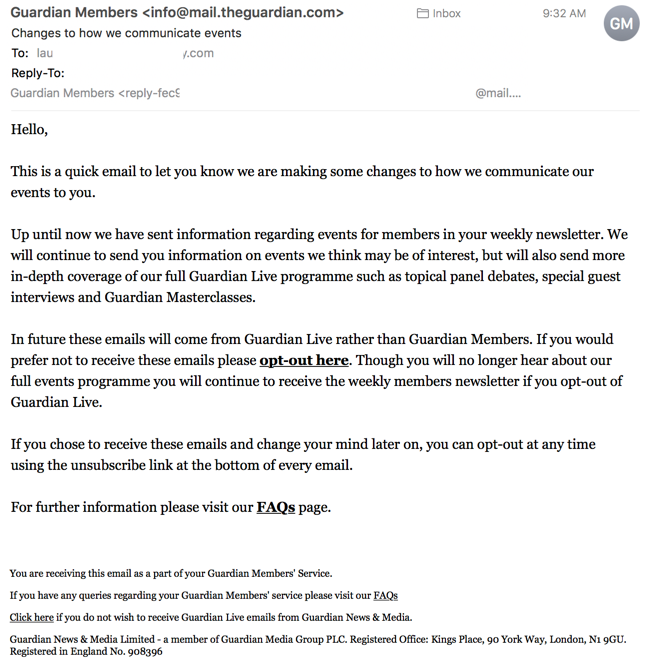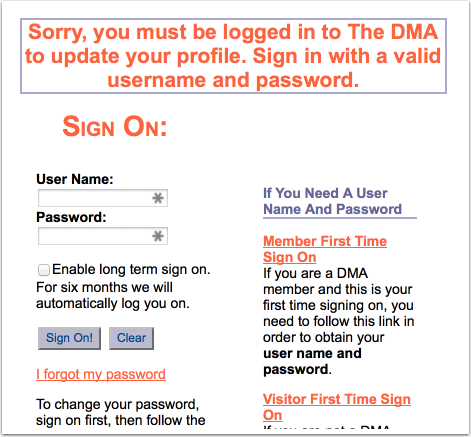Subscription transparency
- laura
- February 10, 2017
- Best practices
I regularly tell clients to be transparent with their sends. With email, permission is better than forgiveness. A surprise change in mail frequency or type leads to complaints. Complaints lead to bulk foldering. Once mail is in the bulk folder, it’s hard to get out of there, particularly at some webmail providers.
The permission is better than forgiveness is hard for a lot of senders to understand. Much of marketing is about assuming the yes in the absence of a no. Sure, they’ll back off when there’s a no, in DMA terms it’s the “one bite at the apple rule.” Unfortunately for senders the one bite rule doesn’t work in the email space.
There are a couple reasons that permission is better than forgiveness in the email space. The biggest is that the ISPs own the mailbox and as the owners they make decisions about who gets access. They prioritize the wants and needs of their customers / users over the wants and needs of advertisers. It’s easy for users to give feedback; in many cases they just have to hit a button. But that’s another whole blog post.
Today I get an email from The Guardian. They’re modifying and expanding their newsletter program, so they sent subscribers an update about it.
Hello,
This is a quick email to let you know we are making some changes to how we communicate our events to you.
Up until now we have sent information regarding events for members in your weekly newsletter. We will continue to send you information on events we think may be of interest, but will also send more in-depth coverage of our full Guardian Live programme such as topical panel debates, special guest interviews and Guardian Masterclasses.
In future these emails will come from Guardian Live rather than Guardian Members. If you would prefer not to receive these emails please opt-out here. Though you will no longer hear about our full events programme you will continue to receive the weekly members newsletter if you opt-out of Guardian Live.
If you chose to receive these emails and change your mind later on, you can opt-out at any time using the unsubscribe link at the bottom of every email.
For further information please visit our FAQs page.
This is the kind of thing that I regularly recommend to clients. I’m so pleased to have an example from an international publication.

